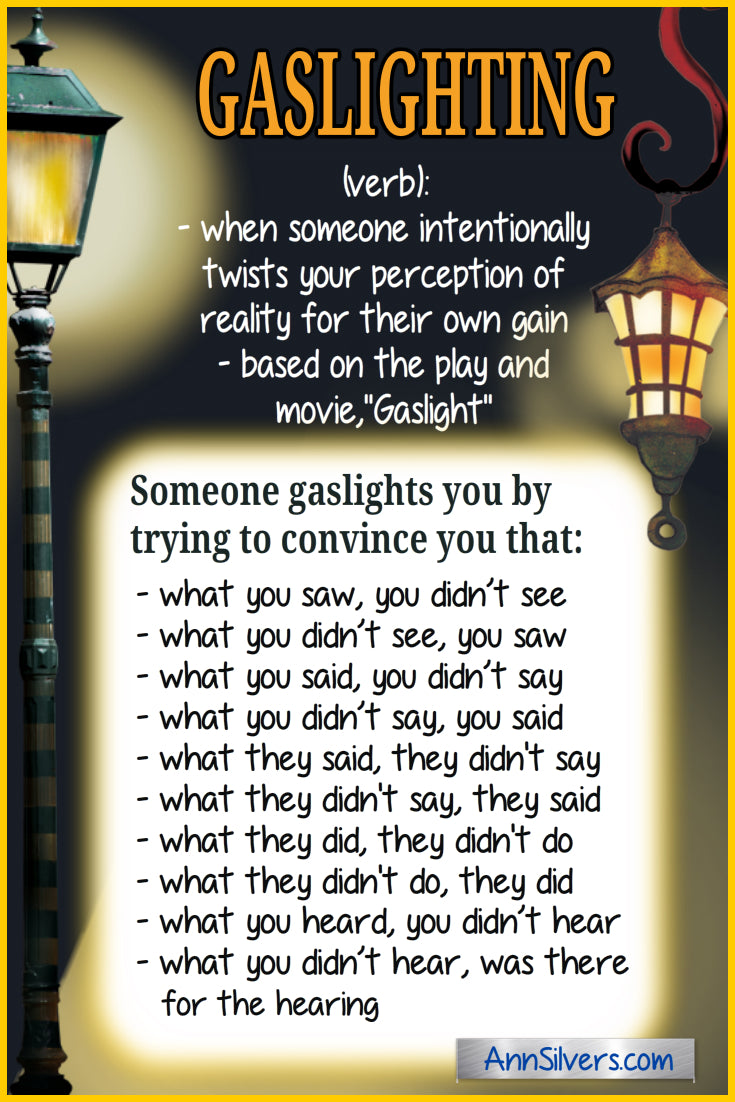
:no_upscale()/cdn.vox-cdn.com/uploads/chorus_asset/file/7845519/gaslight.jpg)
For example, a doctor or an expert who’s older may disregard another medical professional’s concerns or advice.

#Gaslight defintion professional
Medical gaslighting can happen when a medical professional downplays your concerns. This inequal balance can allow for gaslighting to be more common in the workplace.ĭoctors. For example, in many work environments, there are gendered beliefs that masculine people are rational and feminine individuals are not.

You may find that someone you work with misuses these differences to gaslight you. This may be due to your gender, role, level, age, or other factors. Certain stereotypes are present in the workplace. But gaslighting still happens to men by women, it’s just not as common.Ĭo-workers. It often takes away women’s social power and gives men more of an opportunity to abuse the situation. This is because gender inequalities present the possibility for gaslighting. It’s more likely that women will be gaslit by men in romantic relationships. It can happen in various types of romantic relationships. Anyone can gaslight another person in a relationship. But it can also happen in otherwise nonabusive relationships. Experts suggest that gaslighting is common in domestic violence situations. It can happen in abusive or nonabusive relationships. Eventually the gaslighter attempts to gain dominance in the relationship as you might begin to doubt your own memory. Over time, the gaslighter will break down the other’s ability to trust themselves. Eventually, the person being gaslit begins to discredit their own intuition because these incidents begin so subtly. For example, the gaslighter will change small details in stories or memories. This kind of abuse is often subtle in the beginning. This tactic can be used in both personal and professional relationships to gain control and power.

The purpose of gaslighting is to convince you that you can’t trust your thoughts or instincts.Ī gaslighter may try to convince you that your memories are incorrect, that you overreact to situations, or that something is “all in your head.” They may then try to convince you that their version of events is the truth. If someone gaslights you, they’ll attempt to make you question reality. For example, “I told you I was going to be late,” or “I never told you I would pick you up.Gaslighting is an emotionally abusive strategy that causes someone to question their feelings, thoughts, and sanity. Forgetting or Denial: The gaslighter falsely claims to have forgotten what actually happened or denies promises made to the victim.For example: “You’re mad at me for a little thing like that?” or “You’re going to let that come between us?” Trivializing: The gaslighter makes the victim’s needs or fears seem unimportant.Blocking or Diverting: The gaslighter keeps changing the subject or questioning their victim’s mental health, For example, “I bet your crazy friend (or family member) told you that,” or “You’re just making things up so you can use them against me.”.For example, “You’ve been forgetting things more often lately,” or “Your mind is playing tricks on you again.” Countering: The gaslighter wrongly blames the victim’s faulty memory, even when the victim’s recollection is accurate.For example, “Oh, not this again,” or “Now you’re trying to confuse me,” or “How many times have I told you…?” Withholding: The gaslighter pretends not to understand or ignores his or her victims.


 0 kommentar(er)
0 kommentar(er)
